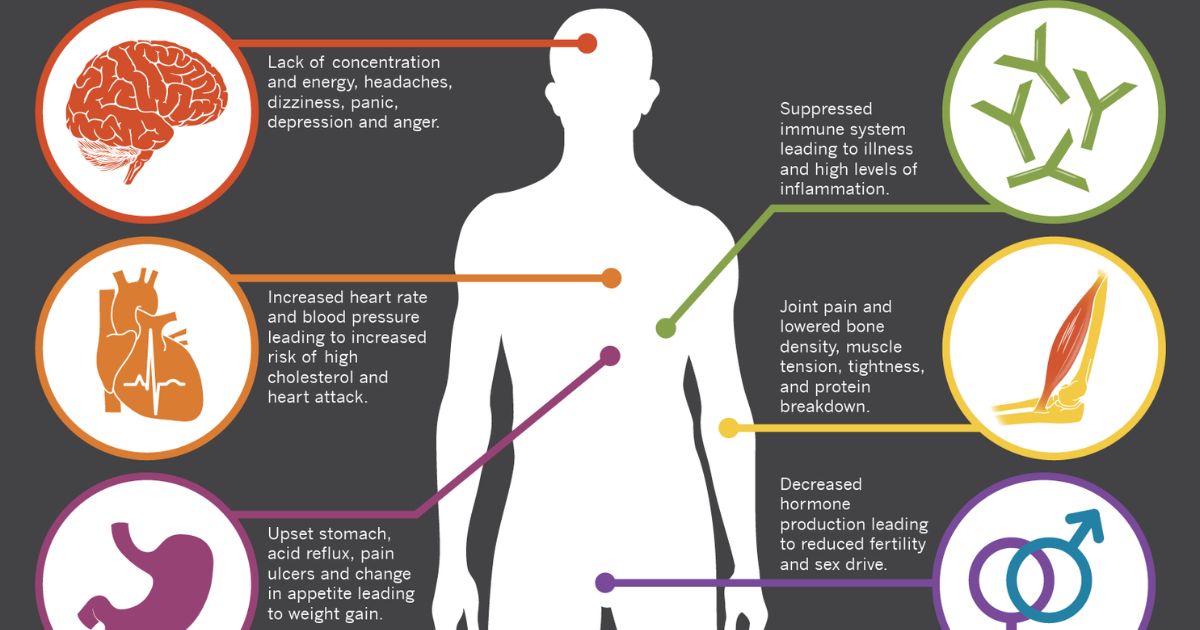Tattoos have become increasingly popular in recent years, serving as a form of self-expression and art. However, it is crucial to understand the potential long-term health risks associated with this practice. This article delves into the evidence-based truth behind the theory of such risks, providing an informative and objective perspective. From allergic reactions and infections to tattoo ink toxicity and bloodborne diseases, we explore the various factors that can impact the long-term well-being of individuals who choose to get tattoos.
Key Takeaways
- Allergic reactions to tattoo ink can manifest as itching, redness, swelling, and blistering, and may lead to potential complications such as infection or scarring.
- Proper aftercare and hygiene practices are important in minimizing allergic reactions and reducing the risk of infections and scarring.
- Tattoo ink may contain harmful chemicals, including heavy metals, which can cause allergic reactions, skin irritation, and potentially increase the risk of long-term health issues, such as cancer.
- Improper tattooing practices, such as the use of poorly sterilized equipment or contaminated ink, can lead to the transmission of bloodborne diseases and long-term skin changes, including pigmentation changes and the potential risk of skin cancer.
Allergic Reactions
Discussing the prevalence of allergic reactions to tattoo ink, it is important to consider the potential long-term health risks associated with getting a tattoo. While tattoos are a popular form of body art, they can pose risks for individuals who are allergic to the ink used. Allergic reactions to tattoo ink can manifest as itching, redness, swelling, and even blistering in the tattooed area. In some cases, these reactions can be severe and lead to complications such as infection or scarring. It is crucial for individuals considering getting a tattoo to be aware of any allergies they may have, and to consult with a professional tattoo artist who can recommend hypoallergenic ink options. Additionally, proper aftercare and hygiene practices can help minimize the risk of allergic reactions and ensure the long-term health and well-being of tattooed individuals.
Infections
Frequently, infections can occur as a potential complication following the tattooing procedure, highlighting the importance of maintaining proper hygiene and following aftercare instructions to minimize the risk. Tattoo hygiene and post tattoo care play a crucial role in preventing infections and promoting proper healing. It is essential to keep the tattooed area clean and dry, avoiding any excessive moisture or exposure to dirty environments. Additionally, applying a thin layer of antibiotic ointment and covering the tattoo with a sterile bandage can further protect against infection. Here is a table summarizing some important aftercare instructions for tattoo hygiene:
| Tattoo Hygiene Tips |
|---|
| Keep the area clean |
| Avoid swimming |
| Moisturize regularly |
| Avoid direct sunlight |
Skin Complications
Skin complications are a potential risk associated with getting a tattoo. Allergic reactions can occur, leading to redness, itching, and swelling. Infections and scarring are also possible complications.
Allergic Reactions
The occurrence of allergic reactions to tattoo ink remains a significant concern in the field of dermatology. While tattoos are generally considered safe, some individuals may experience adverse effects, including allergic reactions, to the ink used. These allergic reactions can lead to various dermatological issues and may require medical intervention.
Here are four important points to consider regarding allergic reactions to tattoo ink:
- Allergic Reactions: Allergic reactions to tattoo ink can manifest as redness, itching, swelling, or the development of a rash around the tattooed area.
- Types of Allergens: Allergens in tattoo ink can include metals, such as nickel or cobalt, as well as colorants and preservatives, which can trigger an allergic response.
- Risk Factors: Certain individuals may be more susceptible to allergic reactions, including those with pre-existing skin conditions or a history of allergies.
- Prevention and Treatment: It is essential to undergo a patch test before getting a tattoo to identify potential allergies. If an allergic reaction occurs, dermatologists can provide appropriate treatment options, such as topical corticosteroids or antihistamines.
Understanding the risks and being aware of potential allergic reactions can help individuals make informed decisions when considering getting a tattoo.
Infections and Scarring
When discussing the topic of infections and scarring in relation to tattoos, it is crucial to address the potential complications that can arise from improper aftercare practices. Inflammation complications and wound healing issues are common concerns when it comes to tattoos. Infections can occur if the tattooed area is not kept clean and properly cared for during the healing process. Bacterial or fungal infections can lead to redness, swelling, pain, and pus formation. Scarring, on the other hand, can result from various factors such as improper tattooing techniques or excessive trauma to the skin. It is important to follow the aftercare instructions provided by the tattoo artist, which typically involve keeping the area clean, avoiding sun exposure, and applying ointments or creams. By practicing good aftercare, the risk of infections and scarring can be minimized, allowing for a better overall tattoo experience.
Tattoo Removal Options
With advancements in laser technology, various non-invasive tattoo removal options have emerged, offering individuals the opportunity to effectively eliminate unwanted tattoos. These options include:
- Laser removal: This method uses high-intensity laser beams to break down the tattoo ink into smaller particles, allowing the body’s immune system to naturally eliminate them over time.
- Surgical excision: In this procedure, the tattoo is physically cut out of the skin and the remaining edges are stitched together. This method is commonly used for smaller tattoos.
- Dermabrasion: This technique involves using a high-speed rotating device to remove the top layers of the skin, along with the tattoo ink. It may cause some discomfort, but it is effective for lightening tattoos.
- Home remedies: While there are various claims about natural remedies for tattoo removal, such as lemon juice or salt scrubs, these methods are not scientifically proven and may cause skin irritation or other adverse effects.
It is essential to consult a professional dermatologist or tattoo removal specialist to determine the most suitable and safest method for tattoo removal.
Tattoo Ink Toxicity
Tattoo ink toxicity refers to the potential harmful effects of the chemical composition of tattoo inks on human health. These inks typically contain a mixture of pigments, additives, and solvents, some of which may have toxic properties. The long-term accumulation of these chemicals in the body raises concerns about their potential health risks over time.
Ink Chemical Composition
The article analyzes the potential health hazards associated with the ink chemical composition used in tattoos. While tattoos have become increasingly popular, it is important to consider the potential risks involved. The ink used in tattoos can contain various chemicals that may pose health concerns. Here are four key points to consider:
- Heavy metals: Some tattoo inks contain heavy metals such as lead, arsenic, and mercury, which can be toxic to the body.
- Allergic reactions: Certain individuals may develop allergic reactions to the chemicals in tattoo ink, leading to skin irritation, rashes, or even scarring.
- Infection risk: Poorly sterilized tattoo equipment or contaminated ink can increase the risk of infections, including bacterial and viral infections.
- Long-term effects: While research on the long-term health effects of tattoo ink is limited, some studies suggest a potential link between tattoo ink and the development of certain types of cancer.
It is crucial for individuals considering getting a tattoo to be aware of these potential health risks and take appropriate precautions.
Potential Health Effects
Research has identified potential health effects associated with the toxicity of tattoo ink, highlighting the need for further investigation and awareness among individuals considering getting a tattoo. While tattoos have become increasingly popular in recent years, it is important to understand the potential risks involved. The long-term health effects of tattoo ink are still being studied, but certain concerns have been raised.
One major concern is the presence of heavy metals in tattoo ink, such as lead, mercury, and arsenic. These metals can potentially cause allergic reactions, skin irritations, and even systemic toxicity. Additionally, the use of low-quality or contaminated ink can increase the risk of infection and transmission of bloodborne diseases.
To ensure the safety of individuals, it is crucial to have proper tattoo health regulations in place. This includes regulating the composition of tattoo ink, ensuring sterile practices during tattooing, and providing guidelines for tattoo aftercare. Furthermore, individuals should be aware of tattoo removal techniques, as they may need to consider removing a tattoo in the future.
The following table highlights some potential health effects and associated risks of tattoo ink:
| Potential Health Effects | Associated Risks |
|---|---|
| Allergic reactions | Skin irritations, itching, redness, swelling |
| Infections | Bacterial, viral, or fungal infections |
| Bloodborne diseases | HIV, hepatitis B and C |
| Systemic toxicity | Heavy metal poisoning, organ damage |
Overall, while tattoos can be a form of self-expression and art, it is important to prioritize one’s health and safety. By being aware of the potential health effects and adopting appropriate tattoo health regulations, individuals can make informed decisions about getting a tattoo and minimize the associated risks.
Long-Term Accumulation Risk
One significant concern regarding tattoo ink is the potential for long-term accumulation risk, as certain heavy metals present in the ink can gradually build up in the body over time, leading to potential health complications. It is important to consider the long-term health effects of getting a tattoo, as they can have lasting impacts on individuals. Here are four key points to consider:
- Heavy metals: Tattoo inks often contain heavy metals such as lead, mercury, and arsenic, which can accumulate in the body and potentially cause toxicity over time.
- Allergic reactions: Some individuals may develop allergic reactions to tattoo ink, which can lead to long-term skin issues and discomfort.
- Infection risk: Improper tattooing techniques or inadequate aftercare can increase the risk of infections, which may have long-term consequences for the skin and overall health.
- Bloodborne diseases: If tattoo equipment is not properly sterilized, there is a risk of transmitting bloodborne diseases such as hepatitis or HIV.
Considering these potential risks, it is crucial to prioritize tattoo safety and make informed decisions when it comes to getting inked. Moving forward, let’s explore another aspect of tattooing: scarring and keloids.
Scarring and Keloids
Due to improper aftercare, tattoos can sometimes result in keloid formation, leading to unsightly scarring. Keloids are an overgrowth of scar tissue that can occur after a tattoo has healed. To prevent keloids, it is important to follow proper aftercare instructions provided by the tattoo artist. This includes keeping the tattoo clean, moisturized, and protected from excessive sun exposure. If keloids do develop, there are various scar treatment options available. These include corticosteroid injections, silicone gel or sheets, cryotherapy, and laser therapy. It is important to consult with a dermatologist or healthcare professional to determine the best treatment approach for individual cases. In addition to scarring, there are other potential health risks associated with tattoos, such as the transmission of bloodborne diseases.
Bloodborne Diseases
Instances of bloodborne diseases, such as HIV and hepatitis, can frequently occur as a result of improper tattooing practices, highlighting the importance of following strict infection control measures in tattoo studios. Tattoo hygiene plays a crucial role in preventing the transmission of bloodborne diseases. Here are four important practices to ensure a safe tattooing experience:
- Sterilization: Tattoo equipment, including needles, should be properly sterilized to eliminate any potential pathogens.
- Single-use materials: Disposable items, such as gloves, ink cups, and barriers, should be used for each client to prevent cross-contamination.
- Proper hand hygiene: Tattoo artists must regularly wash their hands with soap and water or use an alcohol-based sanitizer to minimize the risk of infection.
- Clean work environment: Tattoo studios should maintain a clean and sanitary space, regularly disinfecting surfaces and equipment to create a safe environment for both artists and clients.
Long-Term Skin Changes
Several studies have shown that prolonged exposure to ultraviolet radiation can lead to significant long-term skin changes, such as premature aging and an increased risk of skin cancer. However, another topic of concern regarding long-term skin changes is the impact of tattoos on the skin. While tattoos are often seen as a form of self-expression and art, it is important to consider the potential risks they may pose. Research has indicated that tattoos can cause long-term pigmentation changes, including fading and discoloration over time. Additionally, there has been a growing concern about the potential risk of tattoo-related skin cancer. A recent study found that tattoo ink can contain harmful substances that may increase the risk of skin cancer. It is essential for individuals considering getting a tattoo to be aware of these potential long-term health risks and to take necessary precautions to protect their skin.
| Potential Long-Term Skin Changes | Tattoo-Related Skin Cancer Risk |
|---|---|
| Fading and discoloration | Presence of harmful substances |
| Loss of tattoo clarity | Increased risk of skin cancer |
| Uneven pigmentation | |
| Skin texture changes |
Frequently Asked Questions
Can Getting a Tattoo Cause Any Long-Term Damage to My Internal Organs?
While tattoos can have long-term effects on the skin, such as scarring and allergies, there is limited evidence to suggest that they directly impact internal organs or the immune system. However, further research is needed to fully understand any potential risks.
Is It Possible for a Tattoo to Completely Disappear Over Time?
Tattoo fading is a common occurrence over time due to factors like sun exposure and aging. While tattoos may not completely disappear, there are tattoo removal options available such as laser treatments and surgical excision.
Are There Any Specific Tattoo Ink Colors That Are More Likely to Cause Health Complications?
While it is important to consider overall tattoo ink safety, there is no definitive evidence to suggest that specific tattoo ink colors are more likely to cause health complications or allergic reactions.
Can Getting a Tattoo Increase My Risk of Developing Certain Types of Cancer?
While research on the long-term health risks of tattoos is still ongoing, there is currently no strong evidence to suggest that getting a tattoo increases the risk of developing certain types of cancer.
Are There Any Long-Term Psychological Effects Associated With Getting a Tattoo?
Getting a tattoo can have long-term emotional impacts, as individuals may experience regret or dissatisfaction with their decision. While not everyone will have these feelings, it’s important to consider the potential psychological effects before getting a tattoo.
Conclusion
In conclusion, while tattoos have become a popular form of self-expression, it is important to consider the long-term health risks associated with them. Allergic reactions, infections, skin complications, tattoo ink toxicity, scarring, keloids, and bloodborne diseases are potential concerns. Additionally, long-term skin changes may occur. Despite their aesthetic appeal, individuals should carefully weigh the potential health consequences before getting a tattoo.







